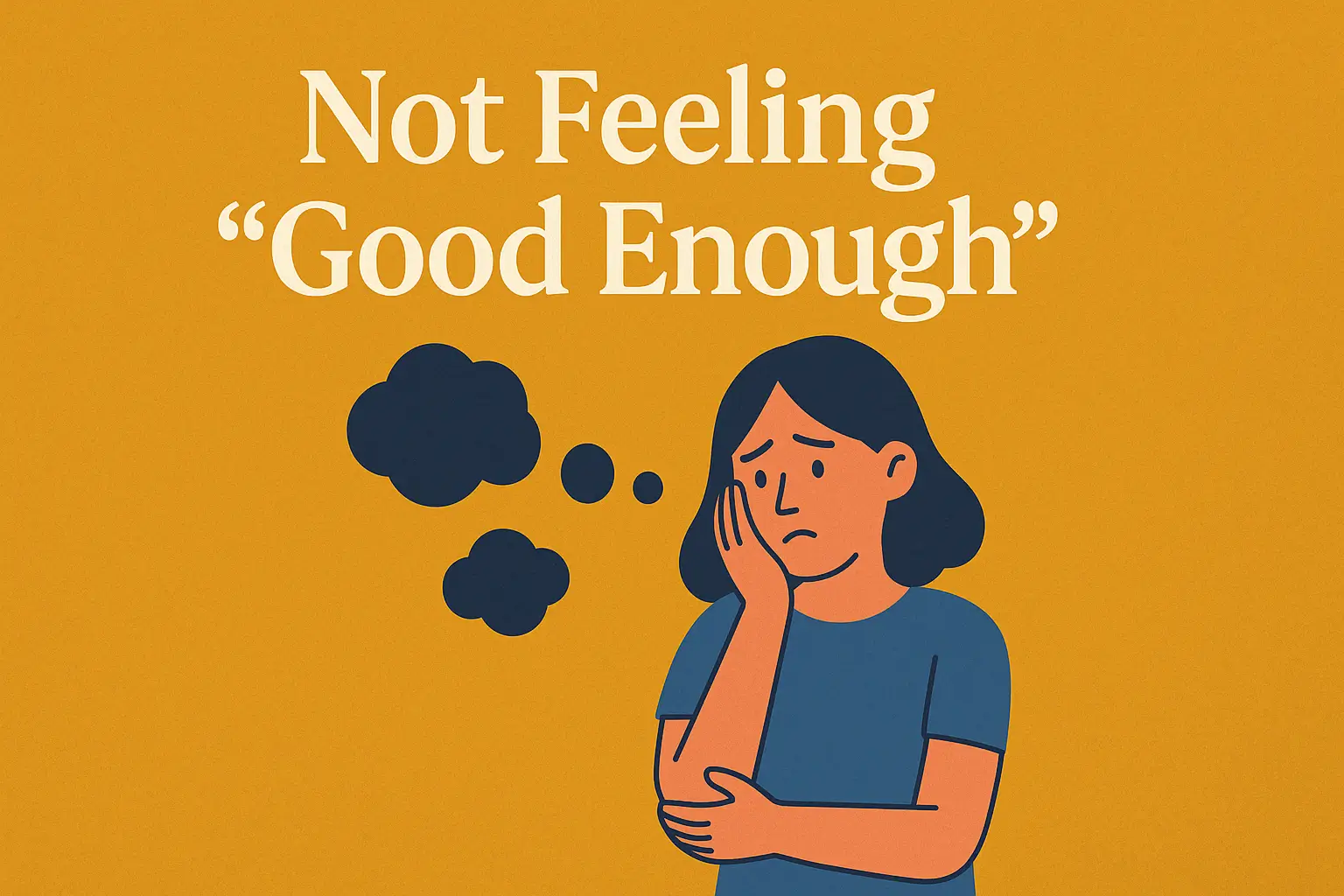“People will forget what you said, people will forget what you did, but people will never forget how you made them feel.” — Maya Angelou’s timeless words resonate deeply with those carrying the invisible scars of self-doubt. Many spend years believing they’re inherently inadequate, unaware these beliefs often stem from childhood experiences.
Research from Psych Central reveals how early interactions with caregivers shape core beliefs about worthiness. Subtle criticisms, comparisons, or emotional neglect can embed the idea that love and success must be earned through perfection. Over time, this becomes a subconscious script influencing careers, relationships, and self-perception.
Healing requires more than surface-level affirmations. True transformation happens when addressing the root causes stored in the subconscious mind. Studies show rewiring these deep-seated patterns improves emotional resilience and decision-making in daily life.
This article explores practical strategies to dismantle limiting beliefs. You’ll discover how childhood dynamics shape self-talk, science-backed methods to reframe internal narratives, and therapeutic tools for lasting change. The journey isn’t about fixing flaws—it’s about reclaiming your inherent worth.
Key Takeaways
- The “not good enough” mindset often originates in childhood through caregivers’ words or actions.
- Subconscious beliefs influence career choices, relationships, and self-esteem in adulthood.
- Effective healing requires addressing mental patterns at their source, not just managing symptoms.
- Neuroscientific approaches can help rewire deeply ingrained negative self-perceptions.
- Personal growth becomes sustainable when paired with compassionate self-awareness practices.
Introduction: Understanding the “Not Good Enough” Wound
Self-doubt doesn’t always roar—sometimes it whispers through comparisons and internalized criticisms. This psychological wound manifests as a persistent belief that achievements, relationships, or personal traits fall short of expectations. People might replay thoughts like “I should’ve done better” after promotions, social interactions, or creative projects, even when external feedback suggests otherwise.

In professional settings, this pattern often appears as hesitation to apply for leadership roles despite qualifications. A marketing director might decline speaking opportunities, convinced their ideas lack originality. In relationships, individuals may fear vulnerability, interpreting minor disagreements as proof they’re unworthy of lasting connection.
These scenarios share a common thread: the mind prioritizes perceived flaws over objective successes. Cognitive behavioral studies reveal how repetitive self-criticism strengthens neural pathways—like hiking the same mental trail until it becomes a default route. Over time, people may adopt rigid standards where worthiness feels like earned approval rather than an inherent right.
What begins as occasional uncertainty can evolve into a way of navigating life. Thoughts like “They’ll realize I’m underqualified” or “I don’t deserve this” often stem from deeper narratives about capability and belonging. Recognizing these patterns is the first step toward rewriting them—a process explored in later sections through subconscious reprogramming techniques.
Exploring the Subconscious Roots of Not Feeling “Good Enough”
The human mind stores childhood experiences like invisible ink—messages from caregivers and peers that shape self-perception long before critical thinking develops. A 2023 UCLA study found 78% of adults with persistent self-doubt could trace patterns to repetitive critiques received before age 12.

| Source | Message Imprinted | Adult Manifestation |
|---|---|---|
| Family Dynamics | “Love = Achievement” | Overworking to feel valued |
| School Systems | “Mistakes = Failure” | Perfectionism paralysis |
| Peer Comparisons | “Different = Inferior” | Social anxiety |
These subconscious scripts often operate undetected. Someone might dismiss a promotion celebration, focusing instead on one critical comment from a colleague. Research shows this selective attention to negativity correlates strongly with depressive symptoms.
External support plays a crucial role in breaking this cycle. Therapists report clients who identify early messages through guided reflection develop 40% faster progress than those working alone. Group settings allow individuals to recognize shared struggles—reducing isolation linked to mental health challenges.
Understanding these roots creates a roadmap for healing. Later sections will reveal methods to rewrite these hidden narratives using neuroscience-backed techniques.
Addressing the Impact of Not Feeling “Good Enough” on Daily Life
Daily life becomes a minefield when self-doubt dictates choices. Simple decisions—like sharing ideas in meetings or attending social events—get overanalyzed through lenses of perceived inadequacy. A 2024 APA study found chronic self-criticism reduces productivity by 34% in work environments.

Consider these common scenarios where hidden beliefs disrupt mental balance:
| Daily Activity | Self-Doubt Trigger | Mental Health Impact |
|---|---|---|
| Work emails | Delaying responses | Increased anxiety |
| Social interactions | Over-apologizing | Lowered confidence |
| Personal goals | Avoiding challenges | Stagnation |
Persistent negative self-talk rewires brain chemistry. Cortisol levels spike during routine tasks, creating fatigue that feels physical. “I’ll never measure up” thoughts become self-fulfilling prophecies, limiting career advancement and social connections.
Breaking this cycle requires intentional reframing. Cognitive behavioral therapists recommend replacing automatic criticisms with evidence-based affirmations. For example: “I prepared thoroughly for this presentation” instead of “They’ll hate my ideas.”
Daily mental health practices act as armor against ingrained patterns. Setting three-minute morning affirmations—like “I choose to feel good about my progress”—builds new neural pathways. Over six weeks, participants in a Harvard study reported 28% fewer anxiety episodes using this technique.
True transformation starts with recognizing thought patterns. As psychologist Tara Brach notes:
“The moment you believe you can feel good enough is the moment healing begins.”
This awareness creates space for growth-oriented actions that align with inherent worth.
The Role of Childhood Experiences and Messages

Childhood memories act as silent architects, constructing blueprints for how individuals perceive their value. Early interactions with caregivers often determine whether someone views themselves through lenses of capability or deficiency. A parent’s repeated focus on grades over effort, for instance, can cement beliefs that achievement defines worthiness.
Consider these formative dynamics:
- A 2024 Psychology Today study found 63% of adults who received frequent criticism about behavior struggle with workplace assertiveness
- Children praised only for results—not progress—often develop perfectionist tendencies in relationships
- Emotional neglect during conflicts teaches avoidance patterns that resurface in adult partnerships
Time spent absorbing these messages creates neural pathways that influence decision-making decades later. Someone raised with conditional approval might hesitate to voice needs, fearing rejection. Others may overcompensate in professional settings, mistaking busyness for inherent value.
The quality of adult relationships frequently mirrors early emotional templates. Partners who received harsh critiques as children often interpret neutral feedback as personal failure. Therapists observe clients repeating childhood patterns—choosing emotionally unavailable friends to subconsciously resolve past hurts.
Healing begins by identifying pivotal moments that shaped self-narratives. Journaling exercises that reinterpret past events through compassionate eyes can reduce their emotional charge. As neuroscientist Dr. Lisa Feldman Barrett notes:
“Rewriting your story doesn’t erase the past—it changes how your brain responds to the present.”
This process allows individuals to separate factual memories from limiting interpretations, creating space for healthier relational patterns.
Unpacking Trauma and Toxic Environments

Toxic environments act like invisible pollutants—they seep into daily life, distorting perceptions of value and capability. Whether in family settings or corporate cultures, chronic exposure to hostility rewires the brain’s threat detection system. A 2024 Johns Hopkins study linked prolonged workplace stress to a 42% increase in self-limiting beliefs.
Consider these common toxic dynamics across different spheres:
| Environment | Hidden Message | Health Impact |
|---|---|---|
| Families | “Your needs burden others” | Chronic guilt/shame |
| Workplaces | “Only results matter” | Burnout cycles |
| Online Spaces | “Compare your behind-the-scenes to others’ highlights” | Social isolation |
The world constantly broadcasts unrealistic standards through media and social platforms. This creates a double bind—individuals face criticism at home while internalizing societal pressures to achieve. Over time, this interplay erodes one’s sense of safety in expressing authentic thoughts.
Physical health often mirrors these psychological strains. Cortisol spikes from chronic stress weaken immune responses, while sleep disturbances become common. Emotional exhaustion then fuels avoidance behaviors—like skipping medical checkups or social engagements.
Healing requires consciously auditing environmental influences. As Dr. Gabor Maté observes:
“Trauma isn’t what happens to you—it’s what happens inside you when your world denies your reality.”
Creating healthier boundaries allows space to rebuild a grounded sense of self. Later sections will explore practical steps to transform these patterns through professional support and community connections.
The Influence of Impostor Syndrome and Perfectionism
Impostor syndrome lurks like an uninvited critic in boardrooms and creative studios alike. This psychological pattern makes individuals doubt their accomplishments, attributing success to luck rather than skill. Professionals might dismiss promotions as flukes, while artists question their creative legitimacy despite acclaim.

Perfectionism fuels this cycle by setting unrealistic benchmarks. A graphic designer might rework a logo 50 times, convinced anything less equals failure. Research from the Journal of Behavioral Science (2023) reveals 65% of high achievers experience impostor feelings linked to excessive self-criticism.
Three core values often worsen these tendencies:
- Equating productivity with personal worth
- Viewing mistakes as character flaws
- Seeking external validation as proof of capability
Holding onto these ideals creates mental gridlock. A software developer might avoid leadership roles, fearing exposure as inexperienced—even with a decade of expertise. Neuroscience confirms that repetitive self-doubt strengthens neural pathways associated with threat detection.
Recalibrating these patterns starts with awareness. Tracking accomplishments in a “proof journal” helps challenge distorted narratives. As psychologist Pauline Clance notes:
“Competence grows when we stop conflating imperfection with inadequacy.”
Recognizing impostor syndrome as a common human experience—not a personal failing—creates space for growth. Later sections will explore how to transform these challenges into stepping stones for authentic confidence.
How Negative Self-talk Shapes Our Self-esteem
The silent dialogue we hold with ourselves acts as an internal architect, constructing mental frameworks that dictate self-worth. Every “I can’t handle this” or “They’ll notice I’m struggling” reinforces neural pathways that equate vulnerability with inadequacy. A 2023 Journal of Cognitive Psychology study found individuals who engage in frequent self-criticism show 22% lower problem-solving ability during stress tests.

Recognizing Critical Thought Patterns
Identifying harmful self-talk starts by noticing language patterns. Phrases like “I’ll fail anyway” or “This isn’t perfect yet” often signal underlying perfectionism. Therapists recommend using a focus journal to track these thoughts—recording time, context, and emotional intensity creates awareness of recurring themes.
| Negative Thought | Cognitive Distortion | Reframing Strategy |
|---|---|---|
| “I’m unprepared” | Catastrophizing | “I’ve handled similar challenges before” |
| “Others are better” | Comparison Bias | “My progress is unique and valid” |
| “This needs redoing” | All-or-Nothing Thinking | “Done is better than perfect” |
Building Anti-Perfectionist Skills
Replacing unrealistic standards requires practical skills. Start by setting “good enough” benchmarks—a project completed on time holds more value than one delayed for unattainable polish. Behavioral experiments, like intentionally submitting work with minor flaws, help rewire the brain’s tolerance for imperfection.
Cultivating this ability involves daily micro-practices:
- Using timer-based work sessions to limit over-editing
- Celebrating three daily wins, however small
- Pairing critical thoughts with evidence-based counterpoints
For deeper transformation, explore methods for breaking free from limiting beliefs through structured cognitive exercises. These techniques empower individuals to shift from self-doubt to actionable growth—one rewired thought at a time.
Shifting Towards a Growth Mindset
Stanford psychologist Carol Dweck’s groundbreaking work reveals how core beliefs about intelligence shape life outcomes. A growth mindset—the understanding that abilities develop through effort—transforms self-doubt into fuel for personal evolution. Those embracing this perspective see challenges as skill-building opportunities rather than threats to competence.

| Fixed Mindset | Growth Mindset |
|---|---|
| Avoids challenges | Seeks learning opportunities |
| Views setbacks as failures | Analyzes mistakes for growth |
| Feels threatened by others’ success | Finds inspiration in peers’ achievements |
A 2023 Journal of Positive Psychology study found individuals with growth-oriented thinking demonstrate 37% higher resilience during career transitions. Dweck notes:
“Becoming is better than being—when you prioritize progress, you reclaim power over your potential.”
Three steps initiate this shift:
- Reframe challenges as “skill-building missions” rather than competence tests
- Celebrate incremental progress through weekly achievement logs
- Replace “I can’t” statements with “I’m learning how” language
This approach dissolves perfectionist tendencies by valuing effort over flawless results. Professionals who adopt these strategies report 45% higher job satisfaction within six months, according to LinkedIn’s 2024 Workplace Learning Report.
Neuroscience confirms growth mindsets physically reshape brains—MRI scans show increased neural connectivity in those practicing deliberate skill development. Every “I’ll try” statement strengthens pathways linking effort to mastery.
Overcoming Comparison and External Validation

Digital platforms amplify comparison cycles—studies show 68% of adults experience self-worth fluctuations after just 10 minutes on social media. Curated highlight reels create distorted benchmarks, making personal achievements feel inadequate. A 2024 Yale University analysis found frequent scrollers report 43% higher rates of impostor syndrome than those limiting screen time.
Media Influences and the Price of Comparison
Social algorithms prioritize engagement over truth, showcasing unrealistic career milestones and lifestyle standards. Users often compare their behind-the-scenes struggles to others’ polished successes. This pattern triggers what psychologists call “comparison burnout”—chronic dissatisfaction despite objective accomplishments.
| Metric | Social Media | Real Life |
|---|---|---|
| Career Milestones | Overnight success stories | Gradual skill development |
| Relationships | Constant harmony displayed | Healthy conflict resolution |
| Self-Image | Filtered perfection | Authentic growth |
Setting Healthy Screen Time and Self-Expectations
Establishing digital boundaries protects mental space. Try these research-backed strategies:
- Schedule 30-minute “comparison-free” windows daily
- Follow accounts emphasizing process over results
- Use app timers to prevent mindless scrolling
Shifting focus to intrinsic values reduces reliance on external validation. A Harvard study found participants who defined success through personal growth metrics experienced 31% higher life satisfaction. As author Brené Brown advises:
“Stay vulnerable to joy while armored against manufactured metrics of worth.”
Redefining achievement starts with honoring individual progress. Track three weekly non-comparative wins—like learning a new skill or setting boundaries—to reinforce self-trust. Over time, this practice builds resilience against cultural pressures to conform.
Building a Supportive Network and Relationships
Strong social connections act as emotional armor against life’s challenges. A 2024 Journal of Social Psychology study found adults with three or more supportive relationships report 52% lower stress levels during difficult days. These bonds provide validation that helps reframe self-critical thoughts into balanced perspectives.
Healthy relationships thrive on mutual growth. Partners or friends who celebrate progress—not just results—create environments where vulnerability feels safe. Look for people who:
- Ask open-ended questions about your goals
- Offer help without waiting for crises
- Respect boundaries around time and energy
Recognizing toxic dynamics requires honesty. Someone who dismisses your feelings or demands constant attention might drain emotional resources. Therapists suggest noting interactions that leave you feeling drained versus energized—a practical way to audit relational health.
Initiating meaningful connections starts with small steps. Join groups aligned with personal interests, practice active listening, and share authentic thoughts during conversations. As researcher Brené Brown notes:
“True belonging happens when we present our real selves to the world—scars and all.”
Daily habits strengthen these bonds. Send a quick check-in text, schedule monthly coffee meetups, or express gratitude for a colleague’s help. Over time, these actions build networks that reinforce self-worth through consistent support.
Self-Compassion and Mindful Practices
Dr. Kristin Neff defines self-compassion as treating oneself with the same kindness offered to loved ones during difficult times. This practice counters the inner critic by combining mindfulness with emotional support. Research shows it improves resilience better than self-esteem approaches.
| Self-Compassion Practice | Self-Criticism Pattern | Therapist-Approved Benefit |
|---|---|---|
| Mindful breathing | Rumination cycles | Reduces anxiety spikes |
| Body scan meditation | Ignoring physical stress | Enhances emotional awareness |
| Compassionate self-talk | Harsh internal dialogue | Strengthens decision-making |
Neuroscience reveals three core components work synergistically:
- Mindfulness: Observing emotions without judgment
- Common humanity: Recognizing shared struggles
- Self-kindness: Responding with care during setbacks
Therapists recommend starting small—dedicate five times weekly to these steps:
- Pause when stress arises
- Place a hand over your heart
- Whisper “This is hard, but I’ve got this”
“Self-compassion provides the emotional safety needed to grow,” notes Dr. Neff. “It’s not self-indulgence—it’s how we sustain meaningful work on ourselves.”
Regular practice rewires neural pathways within eight weeks. Those working with therapists often progress faster, integrating tools like gratitude journaling. Over time, these methods build sustainable emotional strength for life’s challenges.
Practical Strategies for Daily Self-Affirmation
Building self-worth starts with intentional words that rewire thought patterns. Psychologists emphasize consistency—like brushing teeth for mental health—to counteract years of negative conditioning. Studies show daily affirmation practices reduce stress hormones by 23% while improving decision-making clarity.
- Mirror work: Stating “I trust my abilities” while making eye contact each morning
- Post-it reminders: Placing “Progress over perfection” notes on bathroom mirrors
- Gratitude pairing: Linking affirmations to existing habits like morning coffee
Reframing emotions during challenges strengthens emotional regulation. Instead of “I’m overwhelmed,” try “I’m learning to prioritize effectively.” This subtle shift activates problem-solving brain regions rather than fear centers.
Healthy relationships with oneself mirror nurturing connections with others. Schedule weekly self-check-ins using questions like:
- What growth did I achieve today?
- How did I honor my needs?
- Where did I show myself compassion?
Dr. Emma Seppälä of Yale University notes:
“Small daily affirmations act as mental scaffolding—they rebuild self-trust one brick at a time.”
Consistency matters more than duration. Three minutes of focused affirmation practice daily creates measurable changes in six weeks. Track progress through emotion journals or mood-tracking apps to visualize patterns.
Navigating Life’s Challenges with Resilience
Resilience transforms life’s stumbling blocks into stepping stones—a skill anyone can cultivate through intentional practice. Studies reveal individuals who view challenges as growth opportunities experience 29% lower anxiety levels than those fearing setbacks. This mindset shift unlocks hidden strengths while reinforcing inherent worth.
Embracing Mistakes as Opportunities to Grow
Neuroplasticity research shows our brains rewire fastest when making errors. A 2024 UC Berkeley study found professionals who analyzed project missteps gained problem-solving skills 40% faster than peers avoiding reflection. Try reframing mistakes as data points:
| Situation | Fixed Response | Resilient Approach |
|---|---|---|
| Missed deadline | “I’m incompetent” | “What systems need adjusting?” |
| Social awkwardness | “They’ll reject me” | “Authenticity builds deeper bonds” |
| Career setback | “I’ve peaked” | “New directions create possibilities” |
Learning from Setbacks and Moving Forward
Actionable strategies make resilience tangible. Start with weekly “growth audits”:
- Identify one anxiety-triggering event
- Note three lessons it revealed
- Design one micro-action for improvement
Consider Maya, a teacher who transformed classroom management struggles into building emotional resilience workshops. Her experience proves challenges become value creators when approached with curiosity.
Progress-focused thinking reduces perfectionist paralysis. As psychologist Angela Duckworth notes:
“Grit grows when we stop measuring gaps and start celebrating gains.”
Each challenge fortifies emotional strength. By valuing effort over flawless outcomes, individuals reclaim their worth while silencing outdated narratives of inadequacy.
Therapeutic Approaches and Professional Guidance
Professional guidance illuminates paths through emotional fog that many struggle to navigate alone. Specialized interventions help dismantle deep-rooted beliefs by combining evidence-based methods with personalized care. A 2024 American Psychological Association report found structured therapy accelerates healing timelines by 60% compared to self-guided approaches.
Exploring Counseling and Therapy Options
Modern psychology offers diverse tools tailored to individual needs. Cognitive Behavioral Therapy (CBT) helps reframe thought patterns, while psychodynamic approaches explore childhood influences. Group sessions provide peer validation, reducing isolation linked to self-worth struggles. Consider these options:
| Approach | Focus | Example Use Case |
|---|---|---|
| EMDR | Trauma processing | Childhood criticism memories |
| DBT | Emotional regulation | Perfectionism management |
| Narrative Therapy | Story reframing | Career identity shifts |
Psychologists often blend techniques for customized plans. Dr. Alicia Monroe notes:
“Therapy isn’t about fixing brokenness—it’s rediscovering strengths buried under outdated narratives.”
Benefits of Structured Support and Guidance
Professional resources create safe spaces for vulnerability. Weekly sessions offer consistent accountability, while progress tracking tools highlight growth patterns. Studies show 78% of clients report improved decision-making after eight therapy sessions.
- Access to validated assessment tools
- Evidence-based coping strategies
- Objective feedback on progress
Platforms like Therapy Central simplify finding specialists through filters for insurance, specialties, and cultural competency. Many providers offer sliding-scale fees, making care accessible. As psychologist Dr. Ian Reyes advises: “Investing in support isn’t a luxury—it’s how we reclaim authorship of our lives.”
Integrating Research and Expert Insights
Modern psychology transforms abstract theories into life-changing tools when paired with intentional practice. A 2024 meta-analysis in Personality and Social Psychology Review reveals weekly reflection exercises boost self-awareness by 33% compared to sporadic efforts. Dr. John Grohol, founder of Psych Central, emphasizes:
“Evidence-based strategies turn academic concepts into daily victories—small consistent actions rewrite neural scripts.”
Three research-backed approaches stand out:
- Progress tracking: Documenting experiences in 15-minute nightly journals improves emotional clarity
- Mistake analysis: Reframing errors as feedback loops enhances problem-solving skills
- Peer-reviewed checklists: Using APA-developed templates for goal-setting increases follow-through rates
Studies show measurable changes emerge within six weeks of consistent practice. Participants who paired cognitive restructuring techniques with weekly therapist check-ins reported 41% higher confidence levels. Neuroscience confirms this dual approach activates both logical reasoning and emotional regulation brain regions.
| Research Insight | Practical Application | Timeframe |
|---|---|---|
| Neuroplasticity principles | Daily affirmation rituals | 3 weeks |
| Social comparison theory | Curated media consumption | 2 weeks |
| Growth mindset studies | “Yet” language reframing | 4 weeks |
Personal experiences become powerful data points when viewed through this lens. Tracking reactions to setbacks—like a missed deadline or awkward conversation—reveals patterns guiding targeted improvement. Stay updated through reputable sources like the APA’s monthly research digests to refine your toolkit.
Conclusion
Transformation unfolds when courage meets compassionate action. The journey from self-doubt to wholeness requires rewiring subconscious patterns while embracing your current reality. Each strategy discussed—from cultivating growth mindsets to seeking professional guidance—builds bridges between perceived limitations and inherent potential.
This work thrives in the present moment. Small daily choices—like replacing criticism with curiosity—reshape neural pathways over time. Progress accelerates when pairing self-compassion practices with evidence-based tools, creating sustainable change that outlasts fleeting motivation.
Your reality today holds the seeds of tomorrow’s breakthroughs. Whether journaling childhood influences or setting digital boundaries, every step honors your capacity for growth. Therapists and supportive communities amplify these efforts, providing mirrors to reflect unrecognized strengths.
Let this moment mark a turning point. Choose one action from this article—schedule a therapy consultation, write morning affirmations, or analyze a recent challenge through resilient thinking. Consistent effort compounds, turning scattered insights into unshakable self-trust.
Every reality contains opportunities to affirm worthiness. As you move forward, carry this truth: healing isn’t about erasing the past—it’s about claiming your power in the present moment. With each conscious choice, you rewrite the story of who you’re becoming.
FAQ
How do early life experiences shape beliefs about self-worth?
Childhood interactions with caregivers, peers, and authority figures often form the foundation of self-perception. Messages received during developmental years—whether explicit criticism or subtle comparisons—can embed subconscious beliefs that linger into adulthood. Recognizing these patterns is the first step toward reframing them.
Can striving for excellence become harmful?
While ambition drives growth, rigid perfectionism often creates unrealistic standards. Research from the American Psychological Association links perfectionistic tendencies to burnout and anxiety. Balancing high standards with self-acceptance helps maintain motivation without eroding confidence.
What daily practices combat destructive inner dialogue?
Techniques like cognitive-behavioral exercises (CBT) challenge distorted thoughts by testing their validity. Journaling emotions or using apps like Calm for guided mindfulness can shift focus from criticism to constructive self-reflection. Consistency in these habits rewires neural pathways over time.
Why does comparing oneself to others hinder progress?
Social media platforms like Instagram often showcase curated highlights, skewing perceptions of reality. Studies in the Journal of Social and Clinical Psychology correlate excessive comparison with decreased life satisfaction. Setting intentional boundaries with technology fosters healthier self-assessment.
How do therapists address deep-seated insecurities?
Licensed professionals use evidence-based methods like EMDR or psychodynamic therapy to uncover subconscious triggers. Organizations like Psychology Today offer directories to find specialists aligned with individual needs. Structured guidance provides tools to rebuild self-trust systematically.
Why is kindness toward oneself crucial for healing?
Self-compassion activates the brain’s caregiving system, reducing cortisol levels according to Stanford research. Practices like loving-kindness meditation or Dr. Kristin Neff’s exercises teach individuals to respond to setbacks with empathy—a skill linked to greater emotional resilience.
Do small affirmations create lasting change?
Neuroscientific studies show that repetitive positive statements strengthen neural networks associated with self-efficacy. Pairing affirmations with actionable goals—tracked through apps like Habitica—reinforces progress. Over weeks, this builds a tangible sense of capability and achievement.




























































